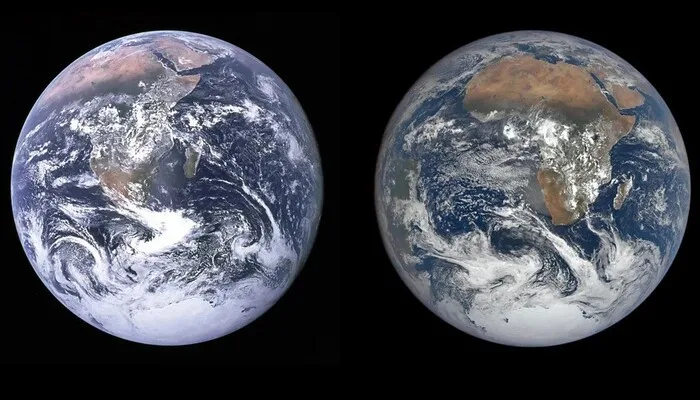Earth’s Transformation: How Climate Change Altered the Planet

Over the past five decades, climate change impact on Earth has become more visible from space. Since NASA’s iconic “Blue Marble” image was taken in 1972, Earth’s appearance has dramatically shifted. Today, new satellite images reveal clear signs of environmental transformation—much of it driven by human activity.
The First Glimpse of a Fragile Planet
On December 7, 1972, the Apollo 17 crew captured the first complete image of Earth. As they journeyed toward the Moon, astronaut Harrison Schmitt described the view: “If there ever was a fragile-appearing piece of blue in space, it’s the Earth right now.” That moment shifted humanity’s perspective—our planet looked vibrant, yet vulnerable.
Read: iPhone 17 Leaks Tease Bold New Design, AI Features
A Planet in Motion and Under Pressure
Unlike the slow creep of tectonic plates, human activity reshapes the planet at a rapid pace. Over 50 years, urbanisation has covered natural landscapes. Deforestation, particularly in the Amazon, has stripped away vast green spaces. Glaciers and polar ice caps have shrunk, and oceans have warmed and risen.
Greenhouse Gases and Warming Waters
Carbon emissions have surged since 1972. This has led to more intense weather, sea level rise, and habitat loss. Coral reefs are bleaching at alarming rates. Once-clear coastlines have blurred under sediment from eroded forests and flooded plains.
From Awe to Action
What once evoked awe now demands action. The Earth remains breathtaking from space, but its transformation is a stark warning. With each passing decade, the Blue Marble reflects more of our impact and our choices.
Follow us on Google News, Instagram, YouTube, Facebook,Whats App, and TikTok for latest updates












